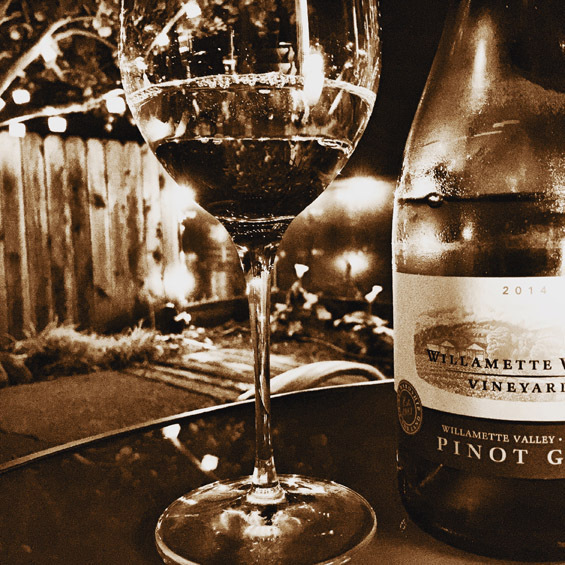 When a new vintage tastes like it's been around the block, or rather, aged for 3-5 years instead of 1 or 2 I feel like I've won the lottery. Take perhaps the almighty Pinot Noir which isn't as fussy about age as a Cabernet, but getting the layers, the nuances of some of the best can be a feat. It's the endless search for wine that not only gives you a great value for your dollar, but also one your kids won't beat you up about because the company is decimating the planet. It requires thought, research and balance.
When a new vintage tastes like it's been around the block, or rather, aged for 3-5 years instead of 1 or 2 I feel like I've won the lottery. Take perhaps the almighty Pinot Noir which isn't as fussy about age as a Cabernet, but getting the layers, the nuances of some of the best can be a feat. It's the endless search for wine that not only gives you a great value for your dollar, but also one your kids won't beat you up about because the company is decimating the planet. It requires thought, research and balance.
There is a magical place...
There are serendipitous opportunities where one comes across a great bottle by chance. When those situations occur, the rewards have increased 10 fold and you simply cannot believe your luck.
Take the wine pioneer who was the first, pre-prohibition.
There is a magical place in Oregon, where a magnificent flood occurred before humans roamed the earth. One where the soils of volcanoes, sand and loess were dropped as if a blessing from someone with a grander eye, a more powerful objective. Someone who determined that the most graceful Pinots might come from a place a little colder, perhaps a little wetter. While these key ingredients of making the land more robust and the soil richer are important, it's the visionary who has their eyes on the prize, that talks less and does more, who truly is the master of the success. The master is the visionary who can see the bounty the richness will bring and cultivates a grape of grapes.
The winery named after the famed valley
The history behind Willamette Valley is as rich as the soil the grapes are grown in. Take the wine pioneer who was the first, pre-prohibition, to tackle the grape growing and wine making process in the Valley, Richard Sumner. A graduate of viticulture and oenology at UC Davis, he was a visionary who realized the potential of the area and felt Pinot Noir would thrive in the region. A lot has changed since those days and the Pinot Noir that began with his cuttings has been planted by many others and the wine has achieved new heights.
Red fruit on the nose and palate, a light chocolate finish.
The winery named after the famed valley it resides in is Willamette Valley Vineyards (WVV). In 1983 Jim Bernau, who attempted his first wine as a child and later was educated in the viticulture program of UC Davis, began planting his first Pinot Noir. This required manual watering with the requisite garden hose, but it was a beginning. As the quality of his wine grew, so did the imbibers. Over time he needed to buy grapes from other growers in the region. There was no one he respected more than Bill Fuller of Tualatin Estate. While he wanted to buy Fuller's grapes, Fuller actually had a better offer. Jim could buy his vineyard. That was the first acquisition for Willamette Valley Vineyards. Today Willamette Valley Vineyards is a leader, not only in the production of top Pinot Noir, but in employing practices to offset environmental impact of the business.
The tropical nuance reminiscent of a Hawaiian holiday.
I recently had the opportunity to taste three of their wines. The first, a 2014 Whole Cluster Pinot Noir. Whole cluster fermentation is much more labor intensive and risky, but once you master and control the variables, the result is truly tasty wine. I found the wine to be fruit forward and silky smooth. Red fruit on the nose and palate, a mild chocolate finish and incredibly delicious.
The 2014 Estate Pinot Gris I wasn't especially excited about because of my limited knowledge about the region and it's experience with these specific grapes. It turns out Pinot Gris has been grown in Willamette since the beginning and it shows. It's bright citrus notes and the tropical nuance reminiscent of a Hawaiian holiday really enticed me. On the palate, the white flowers and grapefruit leave the perfect finish.
Who is in for a Willamette tasting rendezvous?
I could hardly wait to open the 2013 Estate Pinot Noir. The Whole Cluster was wonderful, but could the 2013 be better? Indeed it was. If you enjoy Pinot Noir, this is a palate pleaser. While it is similar in nature to the Whole Cluster, the finish is longer, the palate, more complex and it's a great wine to hang on to for a few years. What I love about these Pinots, is the versatility in pairing. Pinot Noir is a bit of a contortionist when it comes to food.
At this point I don't know how much longer I can wait to visit the region. Who is in for a Willamette tasting rendezvous? If you've already been, please leave a comment about some of your favorite experiences in Willamette Valley and your favorite wines from the region.
